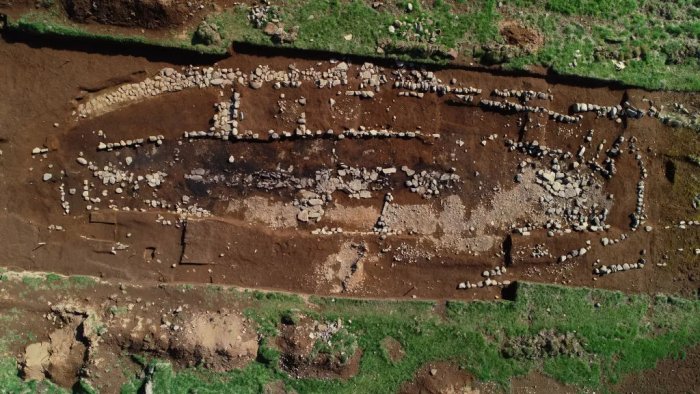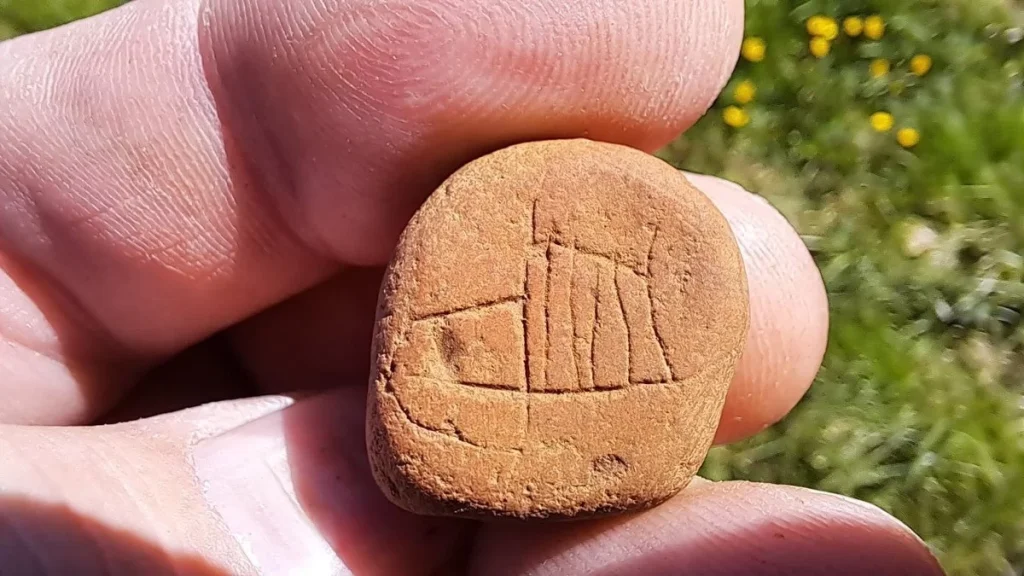Aditya Sisodia
Archaeologists conducting excavations at the Stöð archaeological site in East Iceland have made a remarkable discovery—a sandstone carved with a Viking ship. Believed to be the oldest picture ever found in Iceland, this find provides valuable insights into the early history of the island. Led by archaeologist Bjarni F. Einarsson, the team unearthed the stone in a longhouse at the site, which predates the permanent settlement of Iceland. The presence of this ancient carving sheds light on the Viking culture and maritime activities in the region.
Exploring Stöð and Unearthing the Viking Ship Carving: The initial exploratory digs at the Stöð site took place in 2015, and archaeologists have been returning every summer since to continue their excavations. Their focus was initially on a settlement-era longhouse, one of the largest ever found in Iceland, measuring a staggering 31.4 meters (103 feet) in length. The longhouse also stands out for its richness, yielding 92 beads and 29 silver objects, including Roman and Middle Eastern coins. However, during their recent work, the archaeologists discovered an even older longhouse beneath the settlement-era structure, estimated to date back to around 800 AD—75 years prior to Iceland’s permanent settlement.
Embedded in the wall of the older longhouse, the sandstone carving depicts a Viking ship—a common motif found in Nordic countries. However, this is the first ship drawing discovered in Iceland, making it the oldest known drawing in the country. Archaeologist Bjarni F. Einarsson emphasised the significance of the finding, highlighting its contribution to Icelandic history and the understanding of Viking culture in the region. The discovery expands our knowledge of early seafaring activities and sheds light on the connections between Iceland and other parts of the Viking world.
Speculating on the purpose of the older longhouse, Bjarni F. Einarsson suggests it may have served as a seasonal hunting camp operated by a Norwegian chief. This chief could have organised expeditions to Iceland, aiming to gather valuable resources and bring them back to Norway. Among these valuable items might have been walrus ivory, as DNA analyses and radiocarbon dating have confirmed the existence of a North Atlantic subspecies of walrus in Iceland, now extinct. The absence of domesticated animal bones within the older structure further supports the theory of it being a temporary hunting camp.

In their continued efforts to explore the Stöð site, the archaeologists employed survey equipment to scan a larger area around the longhouse. This expanded investigation uncovered evidence of additional structures and potential boat burial sites, hinting at the existence of a more extensive settlement or ceremonial area. These findings open up new avenues for future research, offering opportunities to delve deeper into the history and cultural practices of early inhabitants in East Iceland.
The recent discovery of a sandstone carved with a Viking ship at the Stöð archaeological site in East Iceland has unveiled the oldest known drawing in the country. This remarkable find provides invaluable insights into the seafaring activities and Viking culture that shaped the early history of Iceland. As archaeologists continue their excavations and uncover further evidence of ancient structures and burial sites, the Stöð site promises to offer a wealth of knowledge about the island’s rich and complex past. The Viking ship carving stands as a testament to the enduring allure of Iceland’s archaeological heritage and the ongoing efforts to unravel its captivating history.
Feature Image Courtesy: Facebook –The Landnámsskáli group in Stöð





